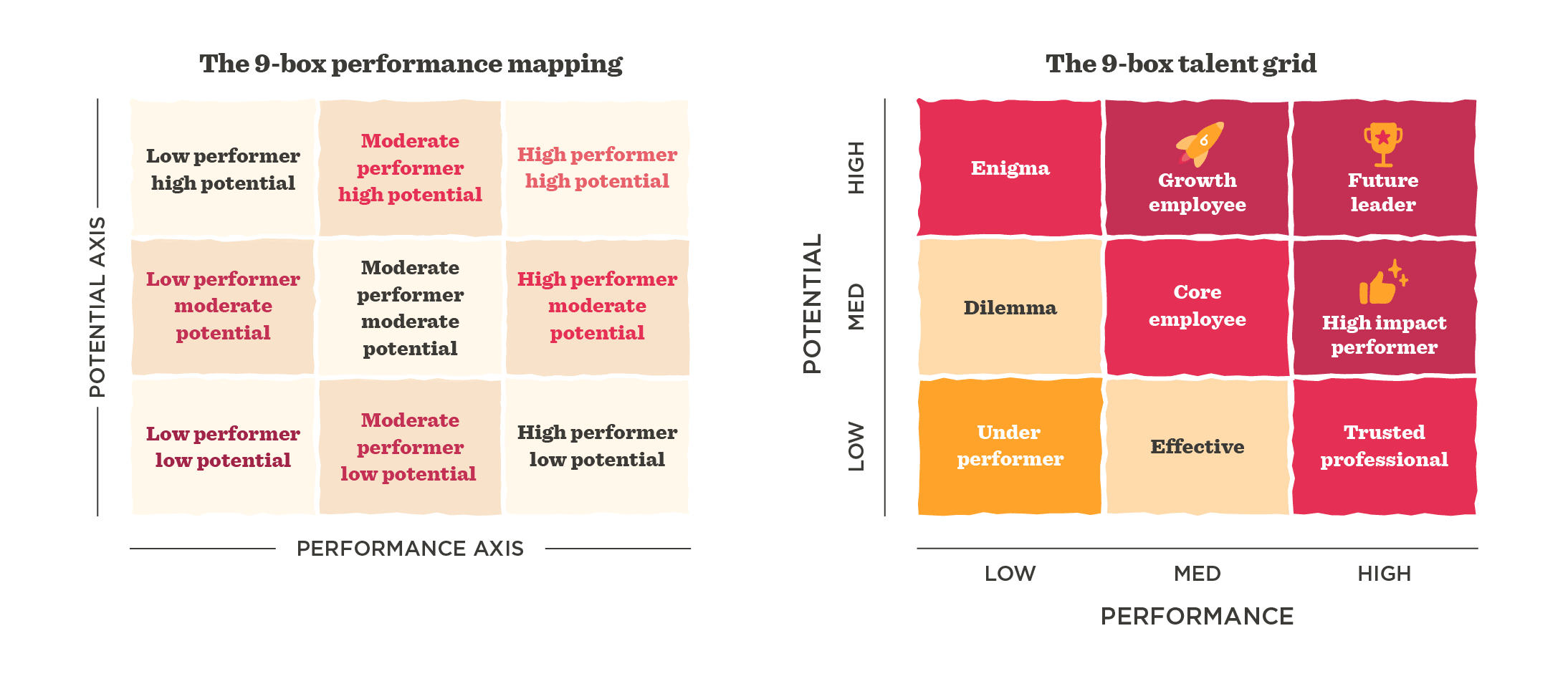A performance map is a chart that visually portrays employees’ performance to help leaders analyze their potential and capabilities.
The performance map, like the 9-box grid, illustrates strengths and weaknesses. However, while the 9-box model is based solely on performance and potential, performance mapping allows leaders to choose any two factors and customize the grid.
Effective performance maps should:
- Spur dialogue concerning employee performance
- Provide a clear visual depiction of job performance
- Streamline the organization process and presentation of performance scores

Why should HR leaders care about performance maps?
The performance map can be an assistive component within the performance review process. Collecting, arranging, and displaying employee scores into a decipherable and accessible format can be cumbersome. The performance map function within an HRIS system takes employee performance ratings and translates them into a digestible format that promotes:
- Collaboration and discussion among HR professionals and managers
- Intelligent decision-making concerning talent management and succession planning
- Consistency and ethical practices in performance reviews
- Presentation of data in an orderly fashion
- Improved succession planning
What can HR leaders do to implement performance mapping?
HR professionals can employ these steps to incorporate a performance mapping approach that enhances the performance review process:
- Establish objectives. Determine which criteria to include in the performance map. What is the goal of the performance map? Does the company want to identify how to nurture teamwork and collaboration among the marketing team? Or to focus on motivation and engagement within sales? Focus on qualities that are significant determinants within the performance review process for the relevant department or positions.
- Train managers in the performance review process. Rather than allowing managers to rotely go through the motions, offer training that challenges managers to coach employees with intention, tackle delicate topics with poise, and objectively evaluate strengths and weaknesses without bias.
- Incorporate supplementary information to provide context. Managers can include additional relevant details about employees, such as their length of employment or to whom they report, to give a broader perspective on their performance. Incorporating extra information can help HR leaders and managers when evaluating their talent pool for succession planning.
- Use performance mapping to spark discussion. Perhaps one manager may rate an employee with a score that reflects a high potential and positive attributes, while another may rate their performance with a less favorable score. Cooperating on performance mapping enables managers with differing opinions to collaborate and provide a more precise depiction of each employee’s performance.
Key takeaways
- A performance map visually represents team members’ performance, helping leaders analyze potential capabilities effectively
- Unlike the 9-box grid, performance maps allow customization of factors, providing flexibility in performance analysis
- They foster dialogue and collaboration, enhancing decision-making in talent management and succession planning
- Performance maps streamline performance reviews by presenting data consistently and ethically
- Implementation involves setting clear objectives, training managers, and using supplementary information for context
- Proper utilization of performance maps can improve company culture by supporting informed evaluations and succession planning
Recommended For Further Reading
How can properly utilizing performance maps improve company culture?
Visually representing an employee’s strengths and weaknesses can aid leaders in accurately evaluating each employee. In turn, a solid assessment can enhance succession planning, supporting each employee to continue their employment journey with satisfaction, engagement, and meaning as they actualize their potential within their role and as a contributing member of the work culture.
